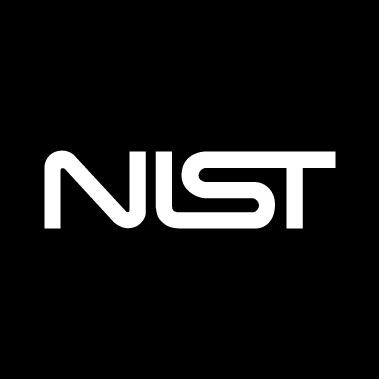As privacy regulations tighten globally and consumers become more aware of how their data is used, organisations are under increasing pressure to ensure robust privacy practices. Among the various frameworks and models available, the NIST Privacy Framework stands out as a powerful tool for guiding privacy strategy. Here’s a look at why it’s worth adopting, along with an assessment of its strengths and weaknesses.
What is the NIST Privacy Framework?
The NIST Privacy Framework was developed by the National Institute of Standards and Technology (NIST), USA, to help organisations manage privacy risks effectively while fostering innovation and trust. Released in 2020, it is a voluntary tool designed to assist organisations in building and enhancing their privacy programs. The framework focuses on a risk-based approach and is adaptable to various industries and organisational contexts.
The NIST Privacy Framework and the NIST Cybersecurity Framework are closely aligned, sharing a similar structure, language, and risk-based approach, allowing for tightly coupled integration. Both frameworks are organised around core functions, which simplify their combined use. The Privacy Framework goes beyond the Cybersecurity Framework by addressing data processing and individual privacy risks, offering a more comprehensive perspective that integrates security and privacy. Organisations using both frameworks can develop cohesive strategies for managing risks, ensuring cybersecurity and privacy are effectively aligned across the likes of governance and operations.
NIST Core Components Explained
The NIST Privacy Framework has three main elements that closely mimic the approach NIST has taken with their Cybersecurity Framework, these are:
- The Core and it’s five functions – Identify-P, Govern-P, Control-P, Communicate-P, and Protect-P. Each function contains several categories and subcategories defining obligations and outcomes. For example subcategory, CT.PO-P2 within the Control Function advises that – “Policies, processes, and procedures for enabling data review, transfer, sharing or disclosure, alteration, and deletion are established and in place (e.g., to maintain data quality, manage data retention)”.
There are eighteen categories within the five functions, broken down further into one hundred subcategories overall.
- Profiles – shiftsthe focus to scope and introduces risk management – When building an organisational profile consideration is given to business requirements and strategic plans, values, risk tolerance, legal and regulatory obligations, data processing, company priorities, resources and the needs of individuals or data subjects.
- Tiers – allows organisations to gauge their maturity levels, ranging from Partial (Tier 1) to Adaptive (Tier 4). The Tiers consider factors such as an organisation’s management approach, resources, and processes for managing privacy, along with the extent of collaboration across departmental units. The higher the tier the more integrated, proactive, and agile privacy practices are.
A Current Profile containing a snapshot of the organisation’s existing privacy posture; A Target profile – representing a customised set of desired privacy outcomes based on defined goals, accepted and residual risk, and regulatory requirements; and a Roadmap representing a current state (“as is”) against a desired state (“to be”), presenting gaps and targets for improvement are commonly produced as outputs of the Framework.
Tiers guide profile development. For example, a firm aiming for Tier 3, known as “Repeatable” might include more advanced risk management practices in its Target Profile than one aiming for Tier 2, known as “Risk-Informed.
Key Reasons for Adoption
- Flexibility and Adaptability One of the framework’s greatest strengths is its flexibility. Whether you’re a small startup or a large multinational corporation, the NIST Privacy Framework can be tailored to meet your specific privacy needs. It’s designed to be scalable, making it applicable across different industries and unlike more prescriptive models, it avoids a one-size-fits-all approach, instead offering customisable guidelines that can adapt to different organisational contexts.
- Comprehensive Coverage of Privacy Risks – Privacy is not just about compliance — it’s about quantifying risks, sometimes accepting or tolerating risk and addressing what remains, best described as residual risk. Consideration needs to be given to the likes of data processing, respecting individual privacy preferences, and anticipating potential harms to individuals. The NIST Privacy Framework is designed to provide a structured methodology for identifying, assessing, and managing these broader privacy risks. This makes it more comprehensive compared to traditional compliance-driven approaches, which often focus on meeting regulatory requirements only.
- Global Alignment and Regulatory Support – Privacy regulations differ across geographies, creating challenges for organisations operating in multiple regions. The NIST Privacy Framework aligns with international privacy laws and regulations such as GDPR (Europe) and The Privacy Act and its associated Privacy Principles (Australia). This alignment makes it easier for organisations to maintain compliance across multiple legal landscapes, offering a standardised approach.
- Ease of Use Relative to Other Models – Compared to other privacy frameworks, the NIST Privacy Framework is user friendly. It is structured around five core functions and these provide a clear roadmap for organisations to assess their current state and map goals for evolving their privacy programs.
- Community Support and Resources – As with other NIST frameworks, the Privacy Framework benefits from international recognition and community support. Extensive resources and training materials are available from NIST, making it easier for organisations to adopt the framework. Community engagement can also be a significant advantage with help readily available.
Cross-Disciplinary Collaboration – Privacy management often requires input from multiple stakeholders across legal, IT, security, and business functions. The NIST Privacy Framework is designed to foster collaboration between stakeholder groups, helping to manage gaps that often exist within organisations. With the right sponsorship, NIST makes it easier to build a unified strategy associating privacy goals with organisational objectives and needs.
Drawbacks of the NIST Privacy Framework
- It’s Voluntary: As a framework, NIST could be seen to lack enforcement power to drive adoption and compliance, however and arguably, privacy is utmost about fundamental data handling practices and being able to demonstrate duty of care in the first place! Showing traceability to regulations is still a must and a framework should be seen as a vehicle or technique to assist in this regard.
- Potential for Over-Customisation: Scope and objectives must be well defined – the flexibility and customisation that make the framework adaptable can also be a double-edged sword, leading some organisations to over-complicate implementations.
- Size and Scale: Implementing the whole framework comprehensively may still require significant time, resources, and expertise, which could be challenging for organisations with limited budgets or staff. Genesys Data, recommends taking a staged approach in line with NIST Cores, Tiers and Profiles, tailored to business needs.
Conclusion: A Balanced Approach to Privacy Management
The NIST Privacy Framework offers a flexible, risk-based, and globally aligned approach to privacy management. For organisations looking to build or enhance privacy programs, it provides a comprehensive yet user friendly methodology that can be customised to suit various needs. The framework’s strengths in integration, adaptability, and practical application make it perhaps the simplest and best contender among privacy best practices and reference models. For organisations already familiar with NIST standards, adopting this framework is a logical step in aligning privacy and security efforts while staying ahead of evolving regulations.
Talk with Genesys Data today – https://genesysdata.com.au/contact/ – about how the NIST Frameworks can help your organisation with its Data Management, Privacy and Security needs.
Reference Material
- National Institute of Science and Technology – Getting Started with the NIST Privacy Framework – Implementation Guide – https://www.nist.gov/system/files/documents/2021/01/13/Getting-Started-NIST-Privacy-Framework-Guide.pdf
- National Institute of Science and Technology – The Privacy Framework – A tool to help organisations improve individuals’ privacy through enterprise risk management – https://www.nist.gov/privacy-framework/privacy-framework
- The International Association of Privacy Professionals (IAPP) – Standardisation landscape for privacy and NIST – https://iapp.org/news/a/standardization-landscape-for-privacy-part-1-the-nist-privacy-framework

